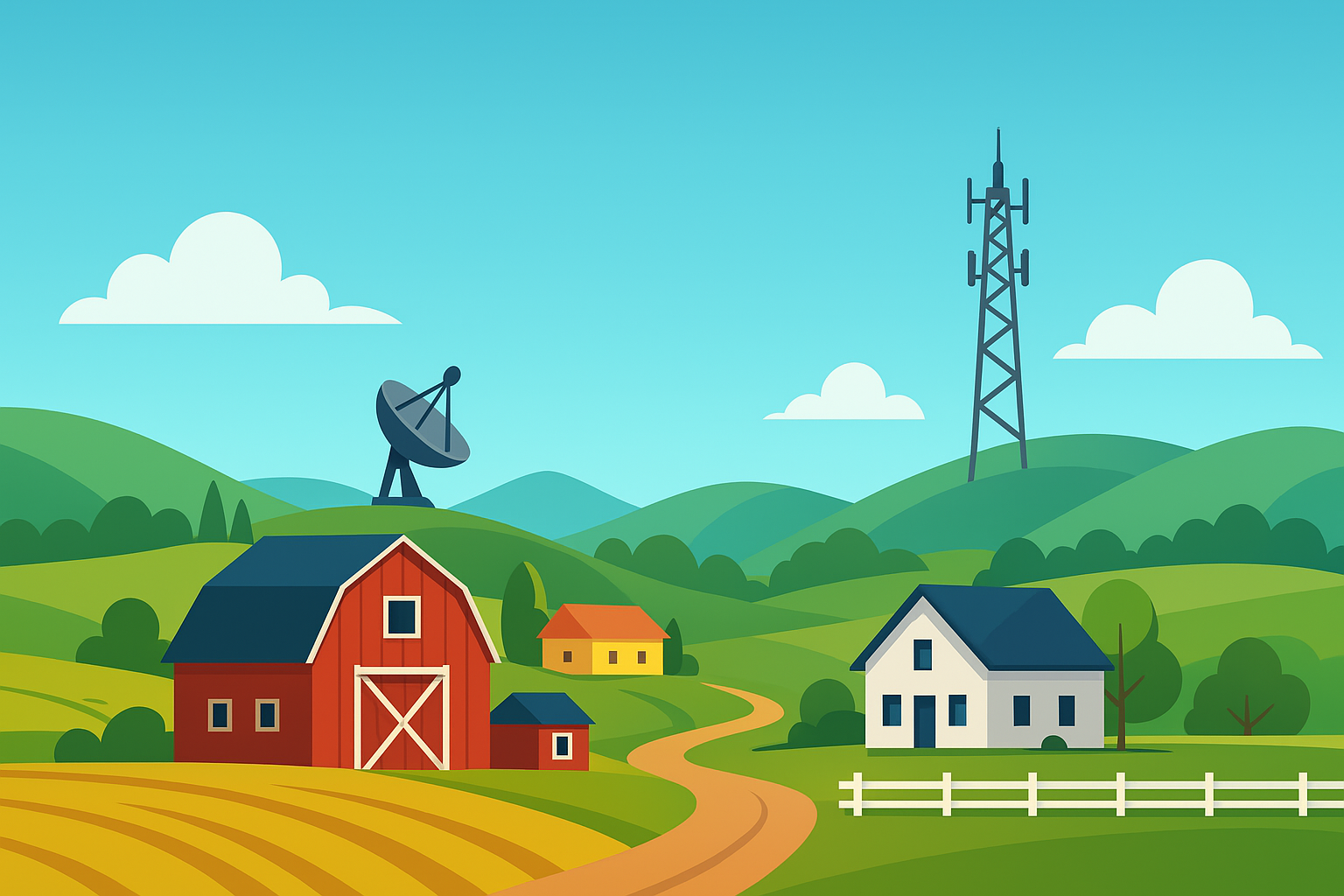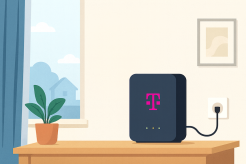Best Rural Internet Providers in the US: What to Know Before You Choose

Finding reliable rural internet in the US can feel overwhelming. Despite advancements in broadband technology, many rural households still struggle with slow speeds, limited availability, and inconsistent service. Fortunately, more internet providers are expanding coverage into rural regions, offering fast, stable, and affordable service.
Whether you rely on the internet for work, school, farming, or daily use, choosing the best provider is essential. This guide breaks down top rural internet options, compares technologies, and helps you match your needs with the right provider.
Why Rural Internet Still Matters More Than Ever
Reliable internet powers almost every aspect of daily life—from virtual jobs and online learning to smart agriculture and telehealth. The digital divide between urban and rural communities is shrinking, but challenges remain:
- Limited wired infrastructure
- Lower population density
- Fewer provider investments
- Geographic barriers like mountains or valleys
Understanding these challenges is key when evaluating your options.
What Counts as Good Internet in Rural Areas?
Before choosing a provider, it helps to understand what counts as good rural internet. For occasional browsing or light streaming, a basic plan may suffice. For households with multiple devices, remote work, or online learning, higher speeds are necessary.
For example, knowing the right internet speed helps determine whether your rural household can handle streaming, video calls, or multiple devices.
The Most Popular Rural Internet Technologies
Different technologies work better in different rural areas. Here’s an overview:
1. Satellite Internet
Satellite internet provides coverage in virtually all locations and has improved in speed and reliability over the years. Many rural residents rely on affordable internet that includes satellite, fixed wireless, and government subsidies to get better connectivity
Pros:
- Available almost everywhere
- Easy installation
- Works where wired service is unavailable
Cons:
- Higher latency
- Possible data caps
- Performance affected by weather
2. Fixed Wireless Internet
Fixed wireless delivers broadband through line-of-sight towers, offering faster speeds than satellite. Many rural households see improved connectivity when fixed wireless is available near their property.
Pros:
- Faster than satellite
- Stable connection
- Lower latency
Cons:
- Requires line of sight
- Performance depends on distance
3. DSL Internet
DSL uses phone lines to deliver broadband. While widely available, it often has slower speeds compared to newer technologies.
4. Fiber Internet
Fiber is the fastest option, but it remains limited in rural regions due to high installation costs.
5. 5G Home Internet
5G home internet is emerging as a solid option for rural households near cellular towers. It offers fast speeds and easy installation but depends on coverage.
Top Rural Internet Providers in the US
Here are some leading providers based on technology, coverage, and reliability:
Starlink
Starlink uses low-orbit satellites to deliver fast and reliable internet even in remote locations.
Hughesnet
Hughesnet offers dependable satellite service for households with basic online needs.
Viasat
Viasat provides larger data allowances than many satellite options and competitive speeds.
Rise Broadband
Rise Broadband is a major fixed wireless provider delivering strong coverage in rural regions.
T-Mobile 5G Home Internet
T-Mobile’s 5G home internet is a fast-growing option with affordable pricing for multi-device households.
Verizon 5G Home Internet
Verizon offers fast speeds with low latency for remote work and entertainment.
How to Choose the Best Rural Internet Provider
Consider the following factors when selecting a provider:
1. Availability
Rural coverage can vary greatly even within the same ZIP code. Always check what service is available at your exact address.
2. Speed Requirements
Remote workers, gamers, and multi-device households need higher speeds. Refer to the earlier internet speed resource to determine what download and upload speeds you need.
3. Latency and Reliability
Low latency is crucial for video calls and online gaming. Fixed wireless and 5G usually offer better performance than satellite.
4. Data Limits
Many rural plans, especially satellite, include data caps. Consider a plan with sufficient data or unlimited usage if needed.
5. Pricing and Contracts
Compare installation fees, equipment costs, monthly rates, and contract requirements.
6. Reputation and Support
Local providers often offer better customer service than national brands. Reviews and neighbor recommendations are invaluable.
Tips for Optimizing Rural Internet
Even with the right provider, you can improve performance with these tips:
- Router placement: Central and elevated positions improve signal coverage.
- Reduce network congestion: Disconnect unused devices during high-demand periods.
- Wired connections: Use Ethernet for more stable speeds.
- Upgrade equipment: Modern routers or mesh systems boost performance.
- Signal boosters: Fixed wireless and 5G users may benefit from external antennas.
The Future of Rural Internet
Federal funding, new towers, fiber expansion, and upgraded satellite systems are closing the rural connectivity gap. In the next few years, rural households can expect:
- Faster speeds
- More providers
- Improved reliability
- Better pricing
Rural internet is finally becoming a viable option for work, education, and entertainment.
Final Thoughts
Choosing the best rural internet provider requires understanding your options and matching them to your specific needs. Satellite, fixed wireless, 5G, DSL, and regional providers all offer unique benefits.
Related Posts

Fri, Nov 21, 2025 7:39 AM
Internet BundlesTop Internet Providers for Small Businesses Today
Discover the top internet providers for small businesses, including Verizon, AT&T, Spectrum, Comcast, and Viasat. Compare speeds, features, pricing, and reliability to find the best connection for your business.

Wed, Nov 19, 2025 10:57 PM
Broadband InstallationHow to Set Up T-Mobile 5G Home Internet
Learn how to set up T-Mobile 5G Home Internet with a step-by-step guide. Includes placement tips, activation steps, speed testing, and troubleshooting advice.

Tue, Nov 18, 2025 12:00 AM
RegulationsKinetic by Windstream Data Caps: What You Really Need to Know
Get the facts about Windstream data caps, how they work, what limits apply, and what this means for your internet usage. Learn whether Windstream truly offers unlimited data and what to expect.

Mon, Nov 17, 2025 9:29 PM
Internet BundlesAffordable Internet Options for Low-Income Families
Discover affordable internet programs for low-income families. Learn about AT&T Access, Cox Connect2Compete, Frontier, Google Fiber, Mediacom, and Spectrum Internet Assist, and find out how to qualify for discounted plans.

Thu, Nov 13, 2025 11:47 PM
cheap internet deals cheap internet plansHow to Compare Mobile Plans Before Switching
Learn how to compare mobile plans before switching with this practical, easy-to-follow guide. Understand data limits, coverage, pricing, perks, and hidden fees so you can confidently choose the best plan for your budget and lifestyle.